Stoned! A new Piaget customisation service revisits a glorious era in 1960s design

Roula Khalaf, Editor of the FT, selects her favourite stories in this weekly newsletter.
“Today, clients are co-creators. More and more, they want to participate in a design.” Chabi Nouri, CEO of watch and jewellery brand Piaget, is talking about the members of what she calls Piaget Society – an unofficial club of aficionados who share the spirit of the hashtag #SunnySideOfLife.
For these fans, little brings a cloud scooting along faster than the sight of somebody else wearing the same watch. Which is why Nouri has launched Infinitely Personal – a Piaget customisation service that very nearly delivers what it says on the box. The options are not precisely infinite (if that’s not too much of an oxymoron) but there are, Nouri assures me, a minimum of 10,000 permutations.
Two watches are eligible for the Infinitely Personal treatment: the Altiplano Tourbillon and the Altiplano Ultimate Concept. While I love a good tourbillon as much as the next man, the Ultimate is the more interesting watch. Just 2mm thick – and that’s not only the movement, but the whole thing – it is a masterpiece of extreme watchmaking. After its launch two years ago, it promptly disappeared back into the workshops for re-engineering. A few microns were shaved off a spring here and a wheel there; the clearance between hands and glass was recalculated so that a change of air pressure would not interrupt the movement.
Now, talk of microns has been replaced with a multitude of aesthetic choices. The colour of the dial? Choose from blue, black, silver, bronze, brown, green, purple or gold – then match or mix it with the colour of the hands and bridges. Add initials to the mainplate; select from a range of buckles and straps; then go off and enjoy yourself for the next nine months or so while Piaget puts it together.
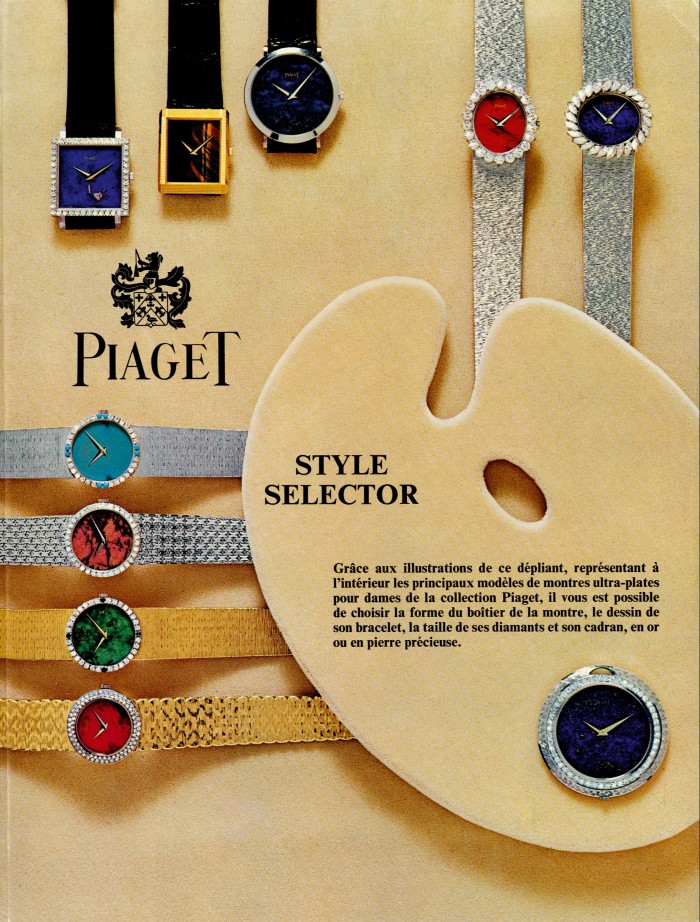
Far from being a novelty, The Infinitely Personal programme recalls a glorious era in Piaget’s history: the time of the 9P, a reliable, ultra-slim movement released in 1957. While not as thin as the Ultimate Concept, the 9P was a revelation in its day for its dials made of semi-precious stones – including jade, tiger’s eye, lapis lazuli, turquoise, malachite, opal, mother-of-pearl, coral, rhodonite and ruby – and offered to clients via a customisation programme called Style Selector. The customisation also offered a choice of four case shapes, six different styles of woven and mesh gold bracelets, various types of indexes, and optional diamond settings.
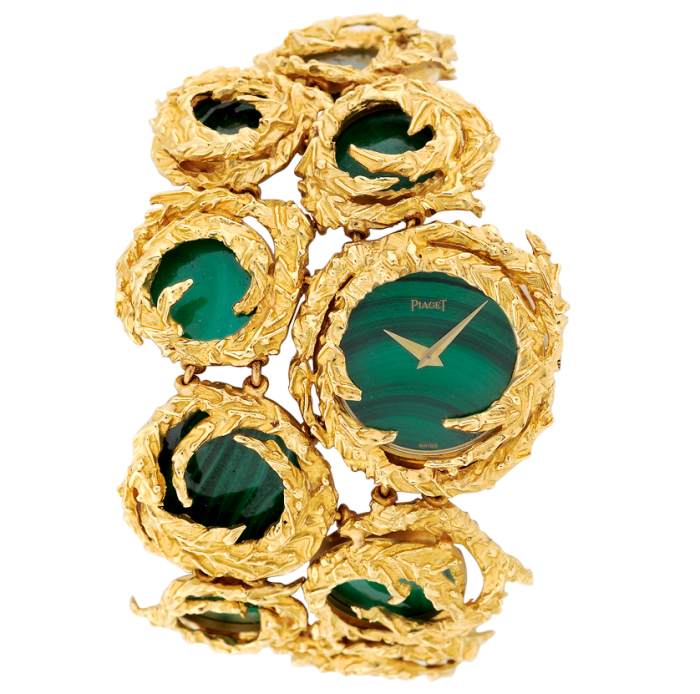
“I was deeply motivated to do something with semi-precious stones when studying gemology in Los Angeles,” says former Piaget CEO Yves Piaget, who joined the company around the same time as Style Selector was launched and was a significant creative force in the ’60s and ’70s. “Most popular at the time was lapis lazuli, which was pretty easy to cut to 0.7mm for a dial, while opal was the most delicate.” The collection’s novelty and colour captured the zeitgeist, with Elizabeth Taylor and Jackie Kennedy among its high-profile wearers. The impact on the watch industry was electrifying. Watchmaking entered its psychedelic moment.
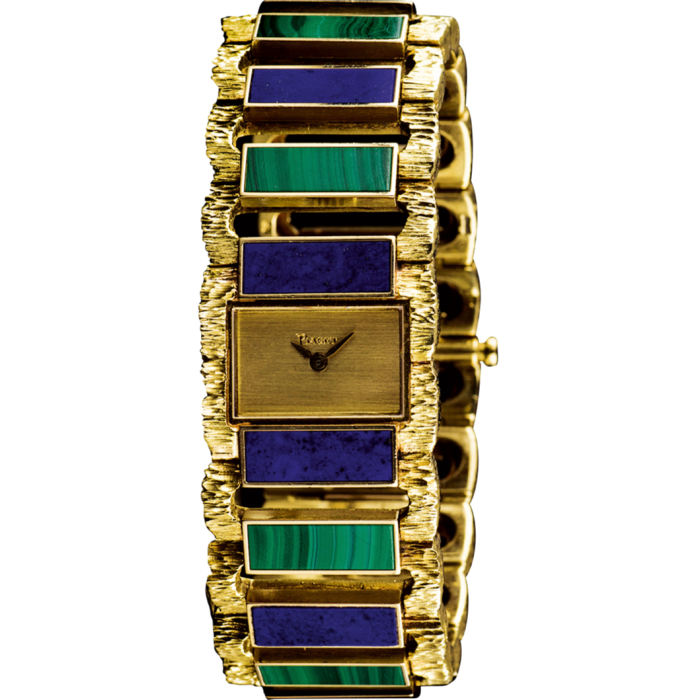
Throughout the ’60s, Yves urged his creative teams to greater heights of imagination. The results were some of the most remarkable timepieces of the era, culminating in the early ’70s with a special range of bangle watches. “We called it the 21st-Century Collection,” says Yves of the name, which has a clairvoyant accuracy: after a generation in the style wilderness, the pieces have come back into favour.
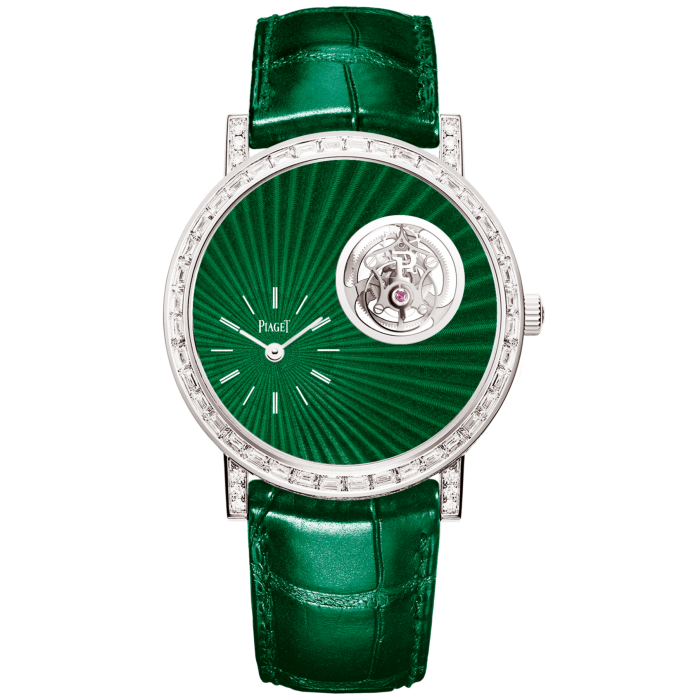
“We started buying them about 10 years ago, mostly because my wife Sandi liked them,” says West End vintage watch dealer George Somlo of the watch’s resurgence among collectors. “Then, they cost around £1,500 to £2,000. Now prices have shot up tenfold. A ladies’ watch with lapis starts at about £16,000; the bangle ones around £40,000. Piaget made some really unusual pieces.” A trapezoidal, textured gold watch with tiger’s-eye dial from the 1970s offered by Italian auction house Meeting Art proved perhaps too unusual and went unsold.
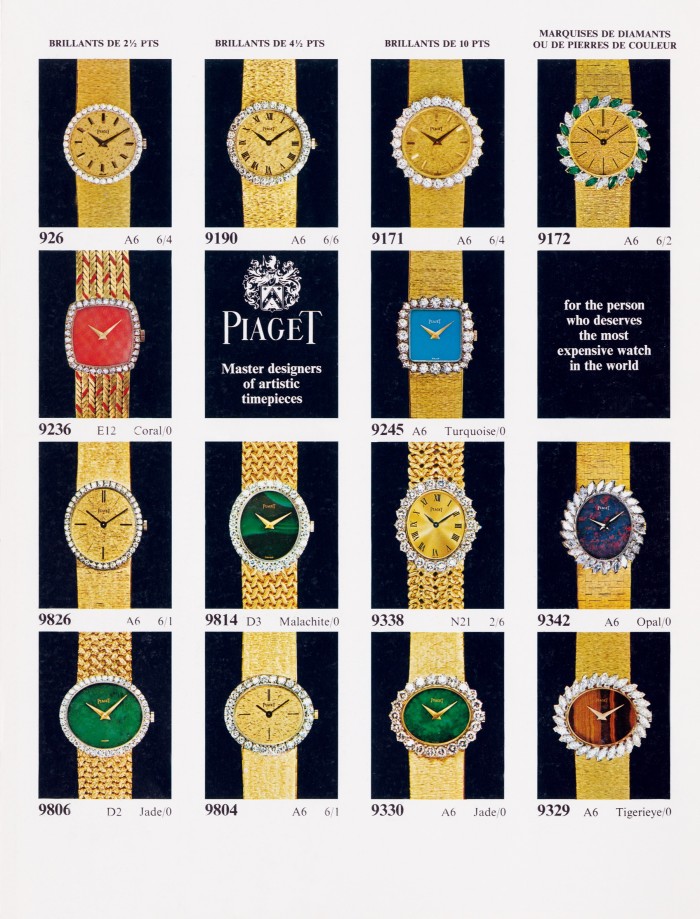
The watch auctions at Phillips, Christie’s and Sotheby’s also turn up vintage Piaget. A 1971 textured gold bracelet watch with a lapis-lazuli dial sold for £12,500, more than double its high estimate, when it was offered by Sotheby’s last April, while in July a c1970 collaboration between Yves Piaget and Salvador Dalí, another gold bracelet style featuring a gold Dalí d’Or coin, fetched £30,700. At New Bond Street’s Watch Centre, a rare bracelet design with alternating lapis-lazuli and malachite panels is priced at £20,000.
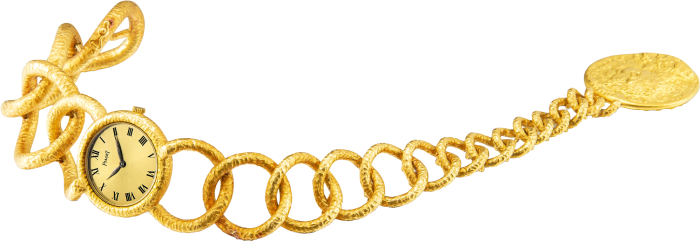
“Piaget’s designs are so unique,” says one Piaget client, a 33-year-old Emirati woman whose grandmother passed on a Piaget habit, along with a bespoke design she wore at her wedding in the 1960s. “I love the early ’70s watches, especially the Extremely Lady. The original was created for Jackie Kennedy. It’s timeless and shows off Piaget’s use of goldwork and hardstones, such as black opal.”
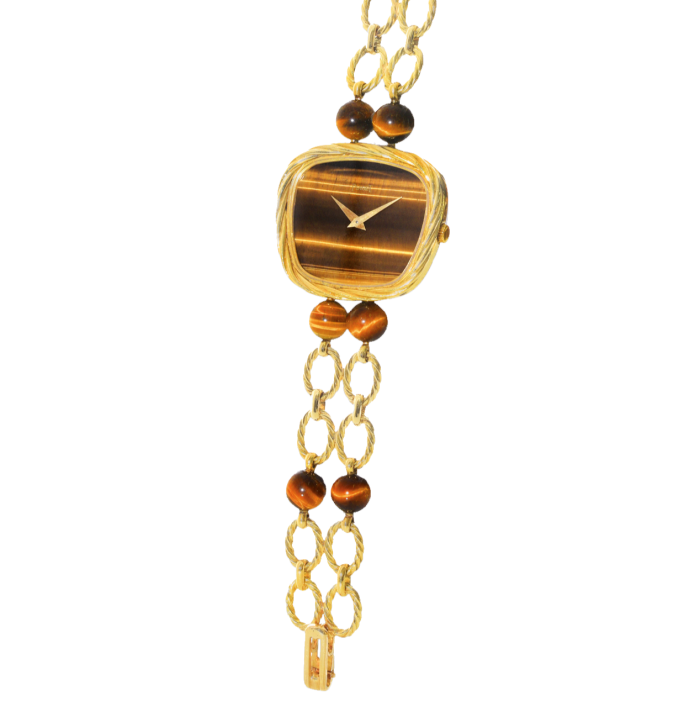
While the majority of hardstone-dialled Piagets were for women, a considerable minority were made for men and, as a huge enthusiast of the style, I am hoping that Infinitely Personal will soon permit the use of semi-precious stones in customisation of the Altiplano Ultimate Concept. Nouri counsels patience, however. “To do that would mean slicing stone thinner than a human hair, and we are unable to do that,” she says. But given the Piaget penchant for looking on the #SunnySideOfLife, I like to think she means “unable to do that yet”.
Christie’s, christies.com. Meeting Art, meetingart.it. Phillips, phillips.com. Piaget, piaget.com. Somlo, 35-36 Burlington Arcade, London W1 (somlo.com). Sotheby’s, sothebys.com. Watch Centre, 74 New Bond Street, London W1 (watchcentre.com).
Comments